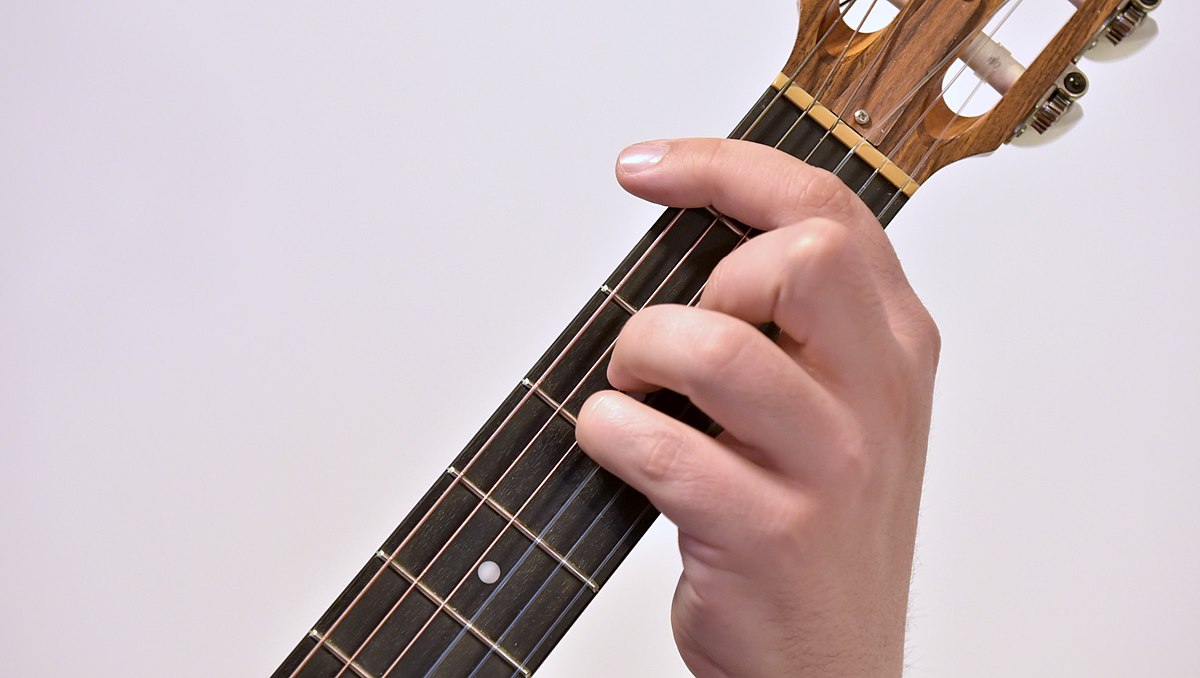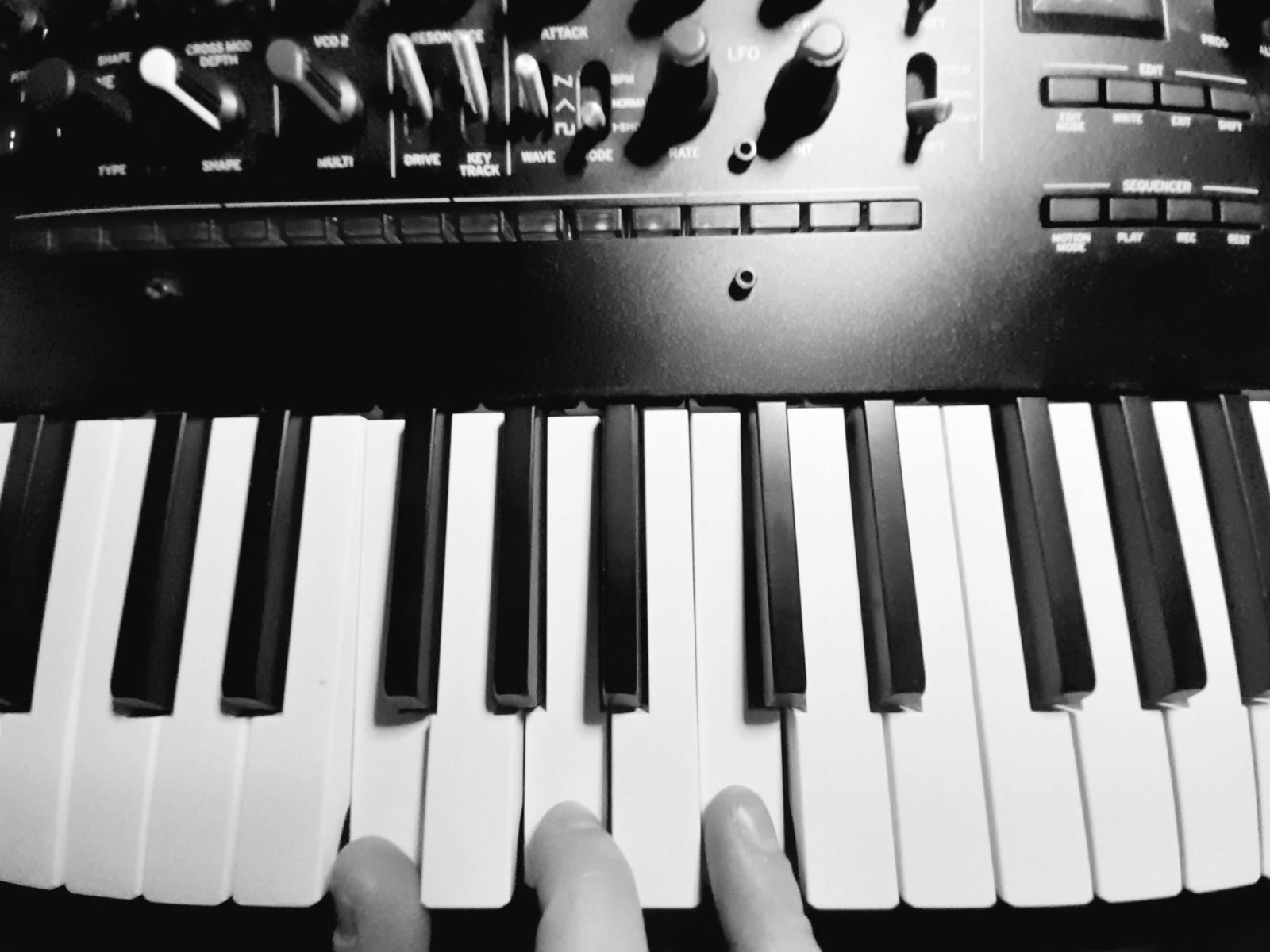Home>Instruments>Guitar>How To Play Bm Chord On Guitar


Guitar
How To Play Bm Chord On Guitar
Published: February 13, 2024
Learn how to play the Bm chord on guitar with our step-by-step guide. Master this essential chord and improve your guitar skills today!
(Many of the links in this article redirect to a specific reviewed product. Your purchase of these products through affiliate links helps to generate commission for AudioLover.com, at no extra cost. Learn more)
Table of Contents
Introduction
Learning to play the guitar opens up a world of musical possibilities, allowing you to express your creativity and emotions through beautiful melodies and captivating rhythms. One of the essential aspects of mastering the guitar is understanding and effectively playing various chords. Among these is the Bm chord, which adds depth and emotion to your playing, making it a crucial chord to learn for any aspiring guitarist.
While the Bm chord may seem intimidating at first, with the right guidance and practice, you can confidently incorporate it into your repertoire. This article will provide a comprehensive guide on how to play the Bm chord on the guitar, covering finger placement, strumming techniques, practice tips, and common mistakes to avoid. By the end of this guide, you’ll have a solid understanding of the Bm chord and the skills to incorporate it seamlessly into your playing.
Whether you’re a beginner eager to expand your chord knowledge or an intermediate player looking to refine your technique, mastering the Bm chord will undoubtedly elevate your guitar playing to new heights. So, let’s dive in and unravel the intricacies of playing the Bm chord with confidence and finesse.
Understanding the Bm Chord
Before delving into the specific finger placements and strumming patterns, it’s essential to understand the theoretical foundation of the Bm chord. The Bm chord, short for B minor, is a fundamental minor chord that adds a touch of melancholy and depth to your music. It consists of three notes: B, D, and F#. When played together, these notes create a haunting and evocative sound that is commonly used in various musical genres, including pop, rock, and blues.
As a minor chord, the Bm chord exudes a sense of introspection and emotion, making it a powerful tool for conveying complex feelings in your music. Whether you’re aiming to evoke a sense of longing, contemplation, or even a hint of darkness in your compositions, the Bm chord serves as a versatile and expressive element in your musical arsenal.
Understanding the musical intervals within the Bm chord is also valuable for grasping its harmonic richness. The chord comprises the root note B, the minor third D, and the perfect fifth F#. This harmonic structure forms the foundation of the chord’s melancholic and captivating sound, allowing you to appreciate its emotive potential as you integrate it into your playing.
By comprehending the emotional and theoretical significance of the Bm chord, you can approach its execution with a deeper appreciation for its expressive qualities. As we progress, we’ll explore the practical aspects of playing the Bm chord, empowering you to infuse your music with the poignant allure of this essential chord.
Finger Placement
Mastering the Bm chord on the guitar requires precise finger placement to produce a clear and resonant sound. Here’s a step-by-step guide to achieving the correct finger positioning:
- Index Finger: Begin by placing your index finger on the second fret of the fifth string (A string). This string should produce the note B.
- Ring Finger: Next, position your ring finger on the fourth fret of the fourth string (D string), which produces the note F#.
- Pinky Finger: Complete the chord formation by pressing down the fourth fret of the third string (G string) with your pinky, producing the note B once again.
- Mute Unnecessary Strings: To ensure a clean and crisp sound, lightly touch the first and sixth strings with your index finger to mute them, preventing any unwanted resonance.
It’s important to maintain a relaxed and natural hand posture while placing your fingers to avoid unnecessary tension. Additionally, ensure that each fingertip presses down on the strings firmly and is positioned close to the fret wire to minimize buzzing and produce clear notes.
Practice transitioning between the Bm chord and other chords to build muscle memory and dexterity. With consistent practice, you’ll develop the agility and precision required to seamlessly switch to and from the Bm chord, enhancing your overall fluency on the guitar.
Remember, mastering finger placement is a gradual process, so be patient with yourself as you work towards achieving a clean and resonant Bm chord. With dedication and practice, you’ll soon find yourself effortlessly forming this essential chord, unlocking a world of musical possibilities in the process.
Strumming the Bm Chord
Once you have mastered the finger placement for the Bm chord, the next crucial aspect is to develop an effective strumming technique that brings out the chord’s full potential. Proper strumming enhances the resonance and emotive quality of the Bm chord, allowing you to infuse your music with depth and expression.
When strumming the Bm chord, it’s important to focus on the following key elements:
- Strumming Pattern: Begin with a simple downward strumming pattern to familiarize yourself with the chord’s sound. Once comfortable, experiment with variations, such as upstrokes and rhythmic patterns, to add dynamism to your playing.
- Consistent Pressure: Maintain consistent pressure across the strings as you strum to ensure a balanced and resonant sound. Avoid applying excessive force, as it can lead to muted or buzzing notes.
- Rhythm and Timing: Pay attention to the rhythm and timing of your strumming, syncing it with the underlying beat of the music. This synchronization creates a cohesive and harmonious sound, elevating the overall musical experience.
- Emotional Expression: Embrace the emotive potential of the Bm chord through your strumming. Experiment with dynamics, infusing your playing with subtle variations in volume and intensity to convey the desired mood and atmosphere.
As you refine your strumming technique, consider incorporating fingerpicking patterns to add a nuanced dimension to your chord progression. Fingerpicking allows for intricate melodic interplay within the Bm chord, enriching its tonal complexity and providing a captivating sonic texture.
Ultimately, strumming the Bm chord is an opportunity to channel your emotions and musical interpretation, allowing you to convey a range of feelings, from introspection to resilience, through your playing. By honing your strumming technique, you’ll unlock the full expressive potential of the Bm chord, enriching your musical journey with its evocative allure.
Practice Tips
Mastering the Bm chord, like any aspect of guitar playing, requires consistent practice and focused effort. Here are some valuable tips to enhance your practice sessions and accelerate your progress in mastering the Bm chord:
- Isolated Finger Exercises: Dedicate specific practice time to exercises that strengthen the fingers used in forming the Bm chord. This can include finger independence drills and fretting exercises to improve dexterity and precision.
- Chord Transition Drills: Practice transitioning to and from the Bm chord in conjunction with other chords. Smooth transitions are essential for seamless chord progressions, so dedicate time to refining these shifts.
- Rhythmic Strumming Practice: Focus on developing a steady and consistent strumming rhythm when playing the Bm chord. Use a metronome to maintain a steady tempo and gradually increase the speed as your proficiency improves.
- Ear Training: Train your ear to recognize the sound of the Bm chord in various musical contexts. This will help you identify its use in songs and anticipate its placement within a piece of music.
- Application in Songs: Incorporate the Bm chord into practice songs that resonate with your musical preferences. Applying the chord in real musical contexts enhances retention and reinforces its practical application.
- Patience and Persistence: Understand that progress takes time, and mastering the Bm chord is a gradual journey. Approach your practice with patience and persistence, celebrating small victories along the way.
Additionally, maintaining a positive mindset and staying motivated throughout your practice sessions is crucial. Embrace the learning process and view challenges as opportunities for growth, knowing that each practice session brings you closer to mastering the Bm chord and expanding your musical capabilities.
By integrating these practice tips into your daily routine and approaching your practice with dedication and enthusiasm, you’ll steadily enhance your proficiency in playing the Bm chord, setting the stage for further musical exploration and creativity.
Common Mistakes
As you embark on your journey to master the Bm chord, it’s essential to be mindful of common pitfalls that may hinder your progress. By recognizing and addressing these mistakes, you can refine your technique and elevate your overall guitar playing proficiency. Here are some prevalent errors to watch out for when learning the Bm chord:
- Insufficient Finger Pressure: One common mistake is applying insufficient pressure with your fretting hand, leading to muted or buzzing strings. Ensure that each finger presses down firmly on the frets to produce clear notes.
- Finger Placement: Inaccurate finger placement can result in unintended string buzzing or muffled tones. Pay careful attention to the placement of each finger and make adjustments as needed to achieve optimal sound quality.
- Unintentional String Muting: While muting unnecessary strings is essential for the Bm chord, be cautious not to inadvertently mute the strings that should ring out, affecting the chord’s resonance.
- Tension in the Fretting Hand: Excessive tension in your fretting hand can impede your dexterity and lead to discomfort or fatigue. Maintain a relaxed hand posture to facilitate smooth chord transitions and minimize strain.
- Inconsistent Strumming: Strumming too lightly or too forcefully can disrupt the chord’s clarity and balance. Strive for consistent strumming pressure and rhythm to achieve a resonant and expressive sound.
- Lack of Patience: Impatience and frustration can hinder your progress. Remember that mastering the Bm chord, like any skill, requires dedicated practice and gradual improvement over time.
By being mindful of these common mistakes and actively working to overcome them, you’ll refine your technique and develop a deeper understanding of the nuances involved in playing the Bm chord. Embrace these challenges as opportunities for growth, and approach your practice with a positive and determined mindset.
With a keen awareness of these potential stumbling blocks and a proactive approach to addressing them, you’ll navigate your journey to mastering the Bm chord with confidence and resilience, ultimately enhancing your overall guitar playing proficiency.
Conclusion
Congratulations on embarking on the enriching journey of mastering the Bm chord on the guitar. Throughout this guide, we’ve delved into the fundamental aspects of understanding, fingering, and strumming the Bm chord, equipping you with valuable insights and practical techniques to elevate your playing.
By comprehending the emotional depth and harmonic structure of the Bm chord, you’ve gained a deeper appreciation for its expressive potential. The precise finger placement and strumming techniques outlined in this guide provide a solid foundation for integrating the Bm chord into your musical repertoire with confidence and finesse.
As you continue to hone your skills, remember that consistent and focused practice is key to mastering the Bm chord. Embrace the journey with patience and determination, celebrating each milestone along the way. Whether you’re crafting evocative ballads, exploring soulful blues progressions, or adding depth to your rock compositions, the Bm chord serves as a versatile and emotive tool in your musical arsenal.
As you navigate the intricacies of playing the Bm chord, maintain a spirit of curiosity and creativity. Embrace the challenges and nuances, allowing them to shape and enrich your musical expression. Whether you’re a beginner venturing into new musical territory or an experienced guitarist seeking to expand your harmonic palette, the Bm chord offers a captivating avenue for artistic exploration and self-expression.
With dedication, perseverance, and a deep-seated passion for music, you’ll find yourself seamlessly weaving the haunting allure of the Bm chord into your compositions, captivating audiences and evoking powerful emotions through your playing. So, pick up your guitar, immerse yourself in the rich tones of the Bm chord, and let your musical journey unfold with creativity and boundless inspiration.











